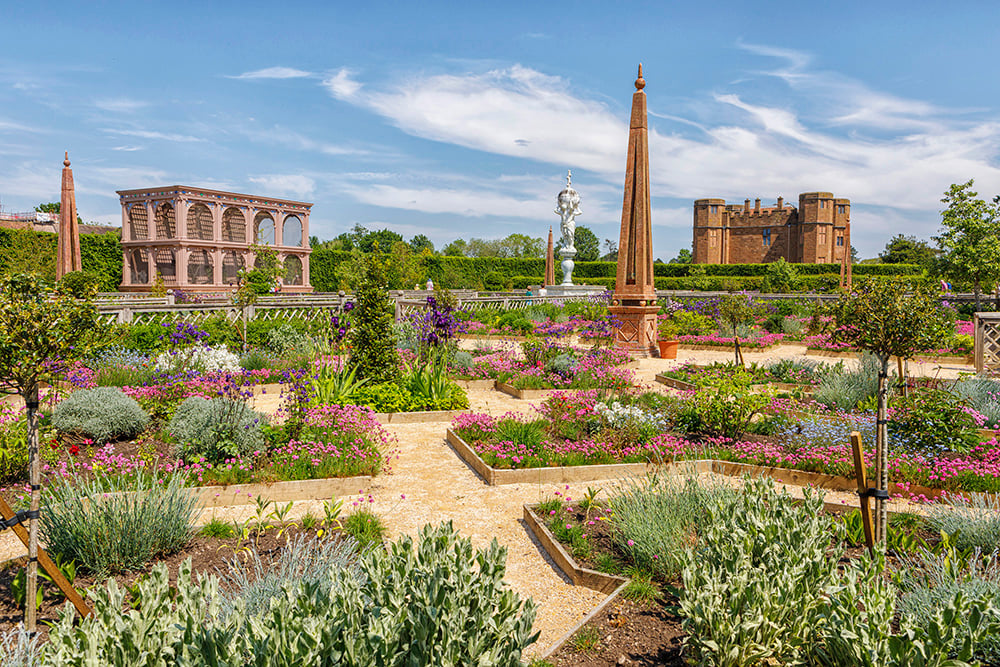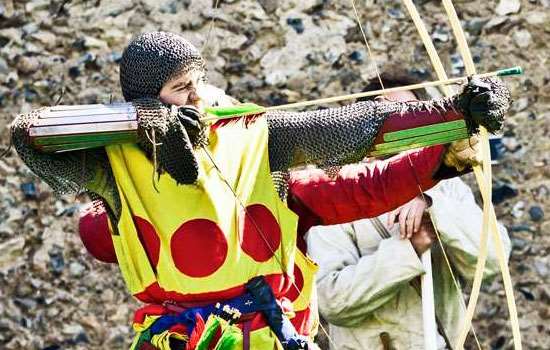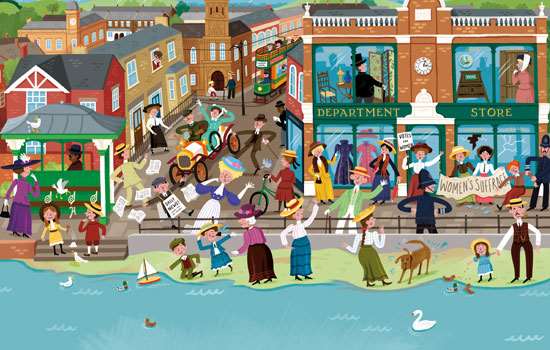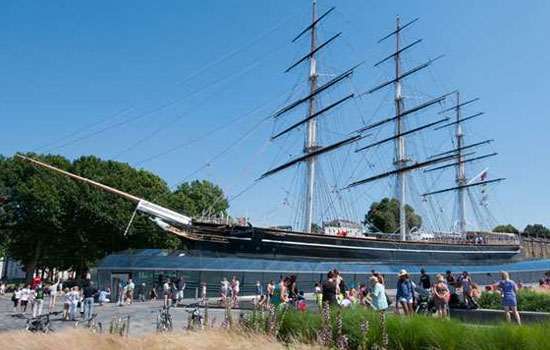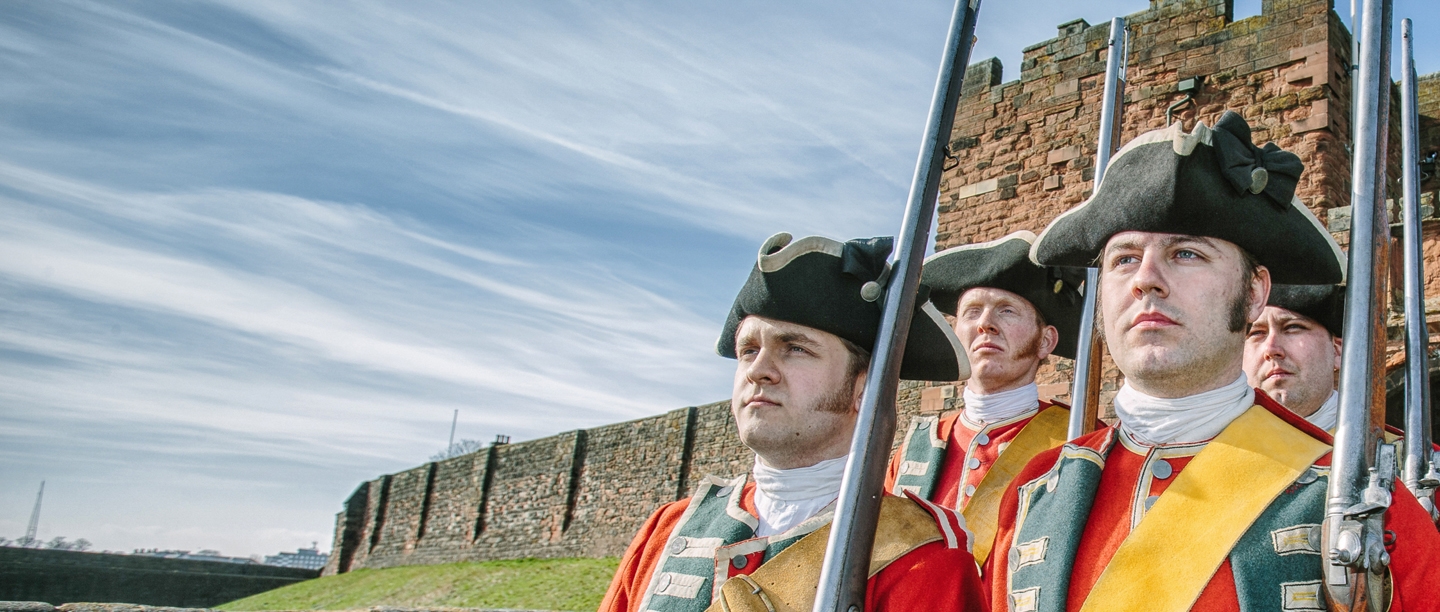
20 QUESTIONS QUIZ: CASTLES
From Arthurian legends to secret Second World War tunnels, test your knowledge of the castles in our care with this just-for-fun quiz from the Summer 2024 edition of your Members' Magazine.
-
1. Portchester Castle in Hampshire served as what during the Napoleonic Wars?
Answer: Prisoner-of-war camp
Portchester first held prisoners during the Anglo-Dutch wars of the 1660s. But it was its final phase as a prison, during the French Revolutionary and Napoleonic wars (1793–1815), that saw the greatest numbers of prisoners at the castle – up to 8,000 at any one time.
-
2. Who had a bowling green created for them while held prisoner at Carisbrooke Castle on the Isle of Wight?
Answer: Charles I
For just over a year from 13 November 1647, following the end of the First Civil War, Charles I was held captive on the Isle of Wight, primarily at Carisbrooke Castle. From there, he took part in numerous negotiations with the English and Scottish parliaments, failed in several escape attempts, and only heard afterwards about the uprisings of the Second Civil War in the summer of 1648. While held captive at the castle, a bowling green was laid out for the king’s use in the outer ward.
-
3. Despite its name, Stokesay Castle is actually what sort of building?
Answer: Medieval manor house
Stokesay Castle in Shropshire was constructed at the end of the 13th century by Laurence of Ludlow, who at the time was one of the richest men in England. It is one of the finest fortified manor houses in the country but its military appearance is superficial – it couldn’t have withstood a serious siege. Among Stokesay’s many treasures are its medieval staircase and tiled floor, and a richly carved 17th-century chamber.
-
4. Maiden Castle in Dorset is one of the largest Iron Age hillforts in Europe. It’s the size of approximately how many football pitches? A 10; B 25; C 50
Answer: 50
Maiden Castle is one of the largest and most complex Iron Age hillforts in Europe – the size of 50 football pitches. Its huge multiple ramparts, mostly built in the 1st century BC, once protected hundreds of residents. When it was first built, the gleaming white chalk ramparts would have towered over the surrounding landscape.
-
5. Which Suffolk castle is referenced by Ed Sheeran’s song ‘Castle on the Hill’?
Answer: Framlingham Castle
The castle in Sheeran's home town of Framlingham was the inspiration for his 2017 hit 'Castle on the Hill'. The song peaked at number two in the UK singles chart and spent a total of 53 weeks in the top 100. The castle itself was built in the 12th century by Roger Bigod, Earl of Norfolk, and was home to the Dukes of Norfolk for more than 400 years.
-
6. Can you unscramble the name of this medieval Northumberland fortress? CATWALK THROWERS
Answer: Warkworth Castle
Warkworth Castle and Hermitage form one of the most unusual pairs of medieval monuments in Britain. The castle was probably laid out in its present form in about 1200 and was the favoured residence of the powerful Percy family from the 14th to the 17th centuries. As the Earls (and later Dukes) of Northumberland, they were among the greatest landowners in northern England. Nearby, on the banks of the river Coquet and accessible only by boat, are the remains of a chapel known as the hermitage, carved directly out of the cliff rock.
-
7. Tunnels at Dover Castle were used as the HQ for which operation during the Second World War?
Answer: Operation Dynamo, the evacuation at Dunkirk
Early in the Second World War, in late May 1940, the Allied forces of British, French and Belgian troops were trapped by the invading German army on the coast of France and Belgium, in the area around Dunkirk. The desperate and near-miraculous rescue that followed – controlled from Dover Castle and codenamed Operation Dynamo – saved the Allied cause in Europe from total collapse, and was the biggest evacuation in military history.
-
8. Richard II’s lost treasure is said to be hidden in which part of Beeston Castle?
Answer: The well
Built by Ranulf, 6th Earl of Chester, in the 1220s, Beeston Castle in Cheshire incorporates the banks and ditches of an Iron Age hillfort. Henry III seized the castle in 1237 and it remained in royal ownership until the 16th century. Much early work on the castle’s medieval history was concerned with the long-standing myth that Richard II (r.1377–99) placed treasure in the inner ward well, rather than on the structural history of the building. Although historical sources suggest that any stockpiles of treasure were recovered by Henry IV (r.1399–1413), the legend was probably the reason for systematic investigations of the castle well in 1794 and 1842.
-
9. Answer
Answer: Kenilworth Castle
The Elizabethan garden that can be seen at Kenilworth today is a recreation of the garden built by Robert Dudley, Earl of Leicester, for Elizabeth I’s visit in 1575. A remarkable eyewitness account survives of its appearance, written by Robert Langham, an official who sneaked into the garden one day while the queen was hunting. His description was used to reconstruct the garden.
-
10. Bolsover Castle was the aristocratic retreat of which Cavalier playboy?
Answer: William Cavendish
Bolsover Castle in Derbyshire was founded in the late 11th century by William Peveril, one of William the Conqueror's knights, but it was neglected from the mid-14th century. Its ruins provided the setting for the Little Castle begun in 1612 by Sir Charles Cavendish. When Charles Cavendish died in 1617, his son William – playboy, poet courtier and later 1st Duke of Newcastle – inherited the Little Castle and completed the interiors with the help of the architect John Smythson. What resulted was a kind of ‘toy keep’, housing tiers of luxurious state rooms.
-
11. Daws Castle was founded by King Alfred to defend the people of Watchet against attacks from… A Romans; B Vikings; C Normans
Answer: Vikings
The clifftop fortress of Daws Castle in Somerset was founded by King Alfred to defend the people of Watchet against Viking attacks. The Anglo-Saxon Alfred and his successors successfully halted the first Viking invasions. But Vikings returned in the 990s, and the Danish king Cnut (Canute) and his family ruled England from 1016 until 1042, when Edward the Confessor restored the old Anglo-Saxon royal line.
-
12. Scarborough Castle’s great tower and south-facing walls were damaged in the early 20th century as a result of what?
Answer: Shelling by German warships during the First World War
Scarborough Castle stands on a massive promontory of rock that rises above the North Sea. Its 12th-century great tower is the centrepiece of a royal castle begun by Henry II. On the morning of 16 December 1914, in the opening months of the First World War, two German warships fired more than 500 shells on the town and castle from the bay. As a result of the shelling, 17 civilians were killed and more than 80 seriously wounded. The castle’s great tower and south-facing walls were damaged and an 18th-century barracks built into the ruins of a medieval royal lodging was damaged beyond any hope of repair.
-
13. Which castle in Cornwall was inspired by the legend of King Arthur?
Answer: Tintagel Castle
The 12th-century writer Geoffrey of Monmouth named Tintagel in his History of the Kings of Britain as the place where King Arthur was conceived, with the help of Merlin. At the same time, Cornish and Breton writers linked the love story of Tristan and Iseult with Tintagel. In turn, these associations with legend led the hugely rich and ambitious Richard, Earl of Cornwall, to build a castle here in the 1230s. The site was of no military value – legend alone seems to have inspired him to build here.
-
14. Pevensey Castle in East Sussex is an example of what type of Roman fort?
Answer: Saxon Shore
In the 3rd century AD, several Roman forts were built along the Channel coasts of east and south-east England and northern Gaul. All were built at strategically important coastal estuaries and inlets, and most of them survive in some form today. They are known as the ‘forts of the Saxon Shore’ from a single reference in a much later Roman document, the Notitia Dignitatum, which describes them as being under the control of a Count of the Saxon Shore.
-
15. Who did Sir Walter Hungerford III imprison in a tower at Farleigh Hungerford Castle for nearly four years in the 1530s?
Answer: His third wife, Elizabeth
Begun in the late 14th century, Farleigh Hungerford Castle was for 300 years the home of the Hungerfords, a family that after distinguished beginnings suffered a series of disasters and scandals. Walter Hungerford inherited Farleigh Hungerford Castle in 1523, when he was 20 years old. He became an attendant in Henry VIII’s household and then went through a quick succession of marriages. He married his third wife, Elizabeth Hussey, in 1532. While Walter had power and influence, he was also cruel and abusive. He locked Elizabeth in a tower at Farleigh Hungerford, starved her and repeatedly tried to poison her.
-
16. Portland Castle, which overlooks Portland Harbour in Dorset, was built in the early 1540s on whose orders?
Answer: Henry VIII
Portland Castle was one of two forts equipped with heavy guns to defend the important anchorage of Portland Roads on the Dorset coast. It formed part of Henry VIII’s nationwide strengthening of England’s defences, during which new fortifications were built at important ports and anchorages along the east and south coasts. The threat that prompted their construction came from continental Europe, where two powerful rulers, Charles V of the Holy Roman Empire (reigned 1519–58) and Francis I of France (1515–47), were being urged to invade England by Pope Paul III (1536–49).
-
17. Which Kent castle has a garden that was created for the Queen Mother?
Answer: Walmer Castle
The Queen Mother's Garden at Walmer Castle was created by leading garden designer Penelope Hobhouse. Gifted to her upon her 95th birthday, the Queen Mother declared, 'I have been given many flowers before but never a garden.' The garden is designed along classical lines reflecting Hobhouse's interest in Islamic gardens. The result is a tranquil combination of still water, rich planting and cool shade.
-
18. In which year did Earl Thomas of Lancaster begin building Dunstanburgh Castle? A 1313; B 1413; C 1513
Answer: 1313
The castle was built at a time when relations between King Edward II and his most powerful baron, Earl Thomas of Lancaster, had become openly hostile. Lancaster began the fortress in 1313, and the latest archaeological research indicates that he built it on a far grander scale than was originally recognised, perhaps more as a symbol of his opposition to the king than as a military stronghold.
-
19. Who, in 1567, was housed in Carlisle Castle after fleeing from her rebellious subjects to England?
Answer: Mary, Queen of Scots
After months of conflict and turmoil in Scotland, Mary, Queen of Scots decided to entrust her fate to her cousin, Elizabeth I of England, and fled to England with 16 supporters. After crossing the the Solway Firth, they arrived at the port of Workington in Cumberland (modern-day Cumbria) in the early evening. The following morning Richard Lowther, the deputy governor of Cumberland, provided an escort to take Mary to nearby Carlisle Castle. At this point, Mary’s status was uncertain. She had arrived of her own free will, and was neither a captive nor a hostage. She was housed for some weeks in what was then known as the Warden’s Tower, in the south-east corner of the inner ward, the last time the castle was used as a royal residence. She was eventually executed in 1587.
-
20. Drogo de la Beauvrière built Skipsea Castle after he was given the lordship of Holderness. Who awarded him the title?
Answer: William the Conqueror
The Norman castle at Skipsea, built in about 1086, was the residence and administrative centre of the lords of Holderness. William the Conqueror created the lordship of Holderness, a vast area from the Humber estuary to Bridlington. He gave it to Drogo de la Beauvrière, who had fought alongside him at the Battle of Hastings in 1066. The king needed a trusted follower there to control the area and the adjacent coastline.
